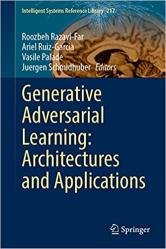 Название: Generative Adversarial Learning: Architectures and Applications
Название: Generative Adversarial Learning: Architectures and ApplicationsАвтор: Roozbeh Razavi-Far, Ariel Ruiz-Garcia, Vasile Palade
Издательство: Springer
Год: 2022
Страниц: 362
Язык: английский
Формат: pdf (true)
Размер: 13.4 MB
This book provides a collection of recent research works addressing theoretical issues on improving the learning process and the generalization of GANs as well as state-of-the-art applications of GANs to various domains of real life. Adversarial learning fascinates the attention of Machine Learning communities across the world in recent years. Generative adversarial networks (GANs), as the main method of adversarial learning, achieve great success and popularity by exploiting a minimax learning concept, in which two networks compete with each other during the learning process. Their key capability is to generate new data and replicate available data distributions, which are needed in many practical applications, particularly in computer vision and signal processing. The book is intended for academics, practitioners, and research students in Artificial Intelligence looking to stay up to date with the latest advancements on GANs’ theoretical developments and their applications.
Generative Adversarial Networks (GANs) continue to be one of the most popular Deep Learning approaches for synthetic data generation. Moreover, GANs are finding their way in other application domains, such as speech and audio synthesis, object detection and segmentation, text-to-image translation, and policy learning in deep reinforcement learning, among many others. This book presents a collection of chapters on the latest advancements on GANs and state-of-the-art applications. GANs are made up of two neural networks: One network learns to generate new data samples, and the other tries to tell whether a data sample was produced by the generator network or it belongs to the training set.
Скачать Generative Adversarial Learning: Architectures and Applications